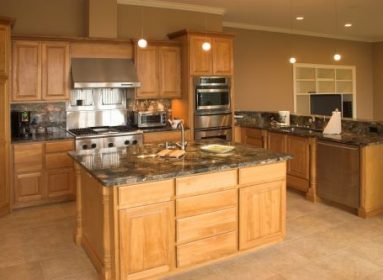
Are you looking to replace or update your current roof? You don’t have to stick to the same old material that you see everywhere. There are many different roofing material options you may not be aware of.
Choose a material that you like best, rather than feeling confined to the one everyone else on your block has or the material that was used for your roof previously. Taking charge of the material of your roof lets you give your home that extra flair. It gives you the chance to upgrade your home aesthetically by changing the way it looks, the overall style of it, and the color of it.
Plus, you want to invest in a roof that will be there for the long-run and that can sustain in different types of weather. These are all important things to keep in mind when choosing between roofing material options. Here are some different materials that you can choose from.
Asphalt Shingles
Asphalt Shingles are the most popular roofing material option used on homes. One of the main reasons for this is that it’s the most cost-effective option. There are different types of asphalt shingles that you can choose from, each with different durability. Because of this, you likely don’t want to choose the cheapest option, as it may cost you more in repairs or replacement over the years.
Composition shingles are the most popular type of these shingles. They are made from a fiberglass base that is then topped with asphalt and mineral granules. These are three-tab or architectural shingles and replacing them is not too difficult of a job. Additionally, asphalt composite shingles are great at adapting to any natural expansion or contraction that may happen to the roof.
Although most manufacturers have labeled these shingles as “lifetime,” you can expect them to last around 15 to 30 years.
Wooden Shingles and Shakes
These are usually made from fire-resistant woods, for obvious reasons. Cedar or redwood are two of the popular wood types used in roofing. Wooden shingles and shakes are significantly more expensive than asphalt shingles, but they can last longer if properly maintained. However, they are not as durable. Even though fire-resistant wood is used, that doesn’t mean the roof has the ability to avoid fire completely, which can be a cause for concern for some. Additionally, wood is unfortunately known to crack.
A perk to choosing a wooden roof is that wood is an insulator. This is great for energy efficiency. Plus, wooden roofs tend to be extremely attractive.
In areas such as the Pacific Northwest, that receive a good amount of moisture, wooden roofs are not the ideal option. Depending on the climate, the life expectancy of the roof varies between 20 to 60 years. In areas that are drier, a wooden roof can last up to 60 years, whereas in a damper climate, the roof can last as little as 20 years.
Metal
Metal roofs tend to be a bit more expensive than both asphalt and wood. However, they are more durable. The metal used for roofs can vary: steel, aluminum, zinc alloy, and copper are common. A big plus of this roofing material is that it needs the least maintenance out of all of the other roofing material options. These roofs are resistant to most impact, which makes them a good choice in rainy or inclement weather.
Like wooden roofs, metal roofs also act as a natural insulator. This will allow the interior to be cooler when the weather is warm outside and vice versa. Plus, the pieces are all recyclable.
The most common type of metal roof is the standing seam roof. This type of metal roof is where aluminum or steel panels meet in raised seams. These seams are intertwined with each other in order to keep moisture out. However, if you don’t want this look on your home, there are metal shingles and shakes that are available for you to choose from instead.
A metal roof tends to last around 30 to 50 years.
Plastic Polymer
The beauty of plastic polymer roofs is that they are made to look like slate or wooden shingles. However, they are easier to maintain than those two materials and are extremely durable. They hold up extremely well in wet and rough weather.
Like wooden roofs and metal roofs, plastic polymer roofs are energy efficient too. The interior of your home will be cooler when the weather is warm out and warmer when the weather is cool out.
These roofs will most likely last for over 50 years.
Rolled Roofing
This type of roofing lasts the shortest length of time but is one of the least expensive options out there. It’s a popular choice for low-slope residential roofs, and for commercial roofs as well. It’s also a popular choice for workshops and sheds. This material is made up of long rolls of mineral-impregnated or asphalt-impregnated material. It’s then topped with mineral granules. These rolls are quite large, sizing in at approximately three feet wide.
It’s not the most attractive roofing option, but if you are looking for inexpensive, this is an option for you. It’s important to note that, on average, these roofs only last around 10 years.
Slate
On the opposite end of the price spectrum from rolled roofing is slate. This is one of the oldest roofing materials used, and it’s extremely durable. It’s fireproof and resistant to inclement weather.
Slate is energy efficient, as it’s a dense material. Just like wooden roofs, metal roofs, and plastic polymer roofs, slate roofs will regulate the internal temperature.
One of the main reasons slate roofs are so expensive is because of how long they last. A slate roof can last anywhere from 75 to 150 years. If you prefer to pay a large amount at once and not have to really worry about your roof again, this is a good option for you.
Choosing from the different roofing material options can be overwhelming. At Interstate Roofing, we understand that it may be difficult to figure out which one will work best for you and your home. Give us a call, and we’ll be more than happy to talk you through everything and figure out which roofing material option is the one you should choose.







